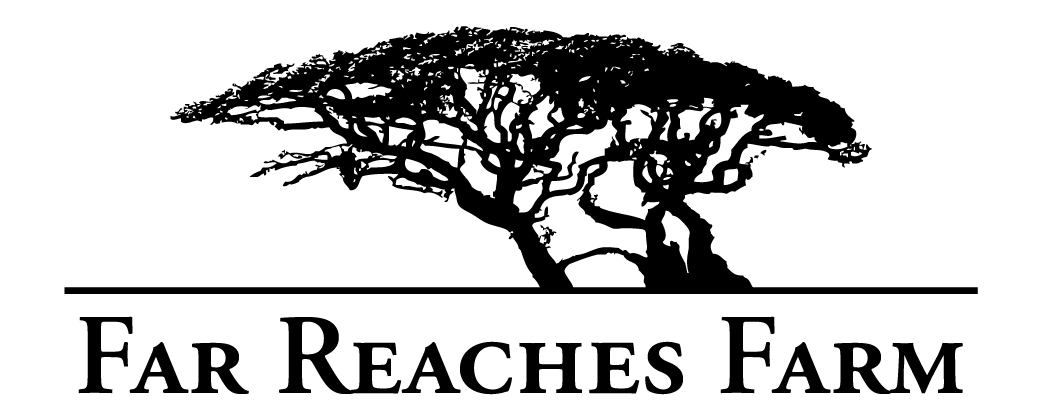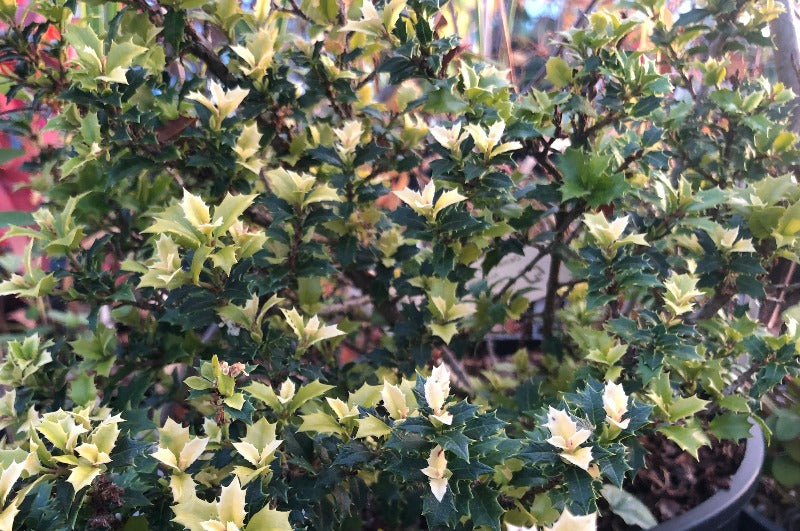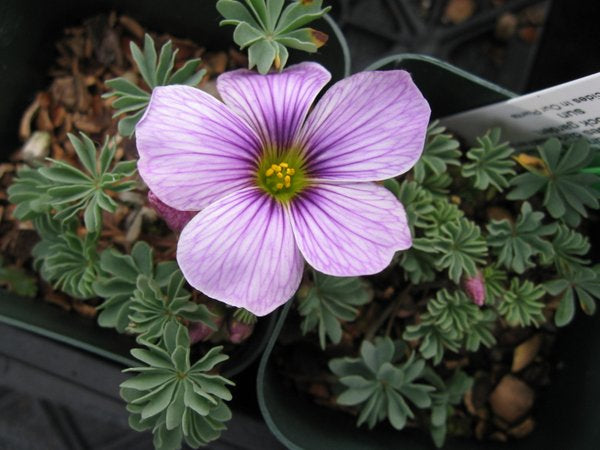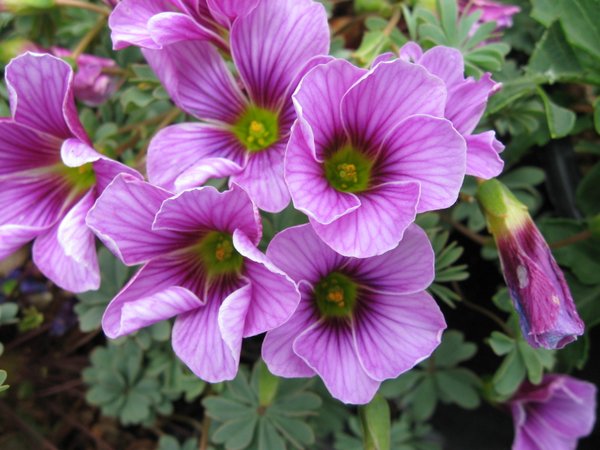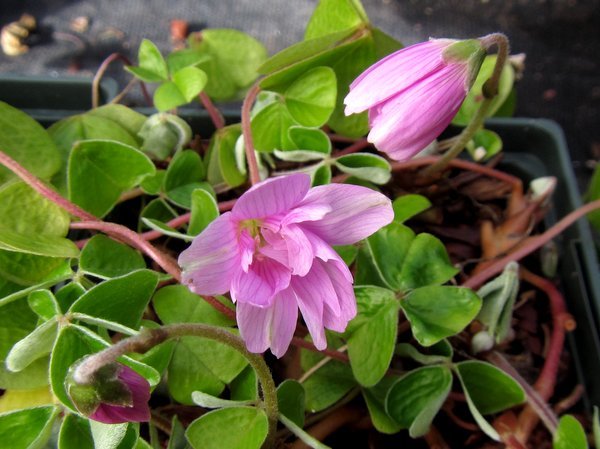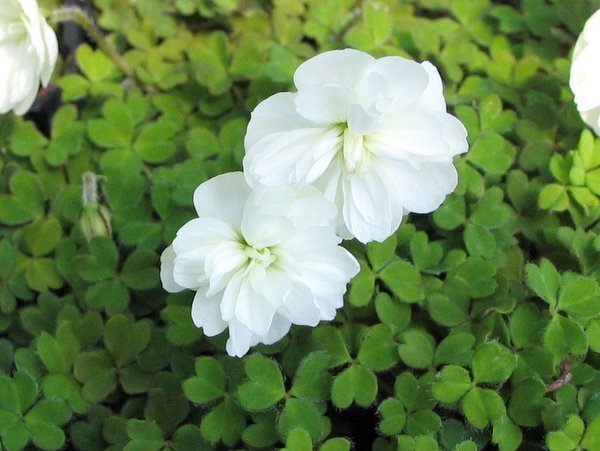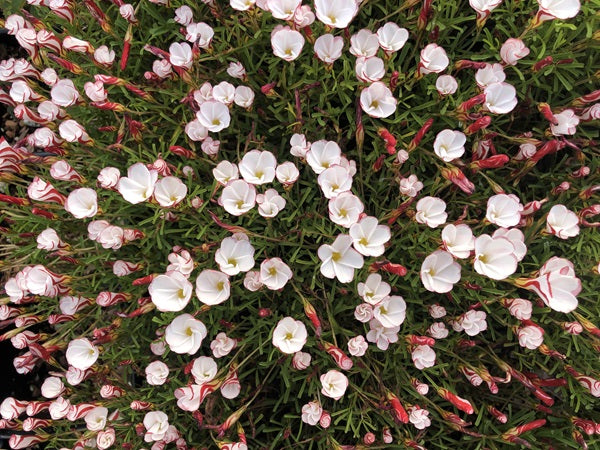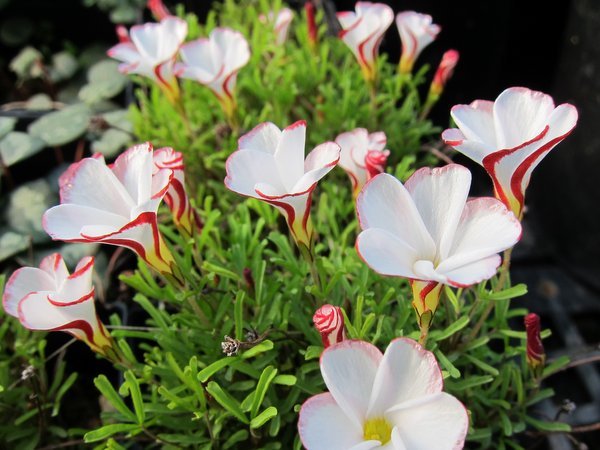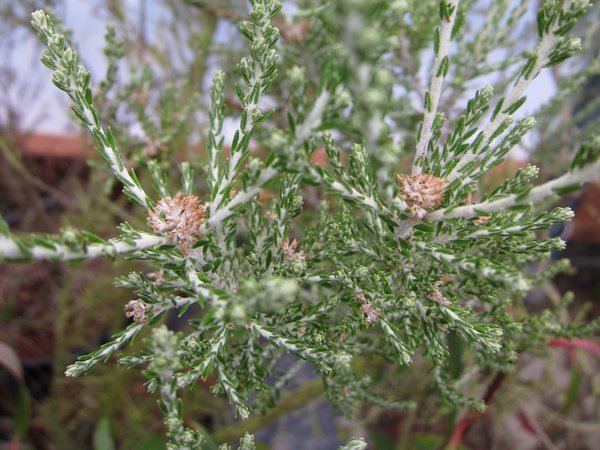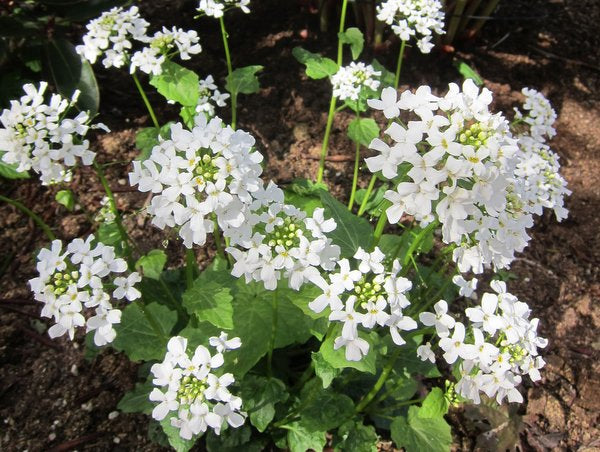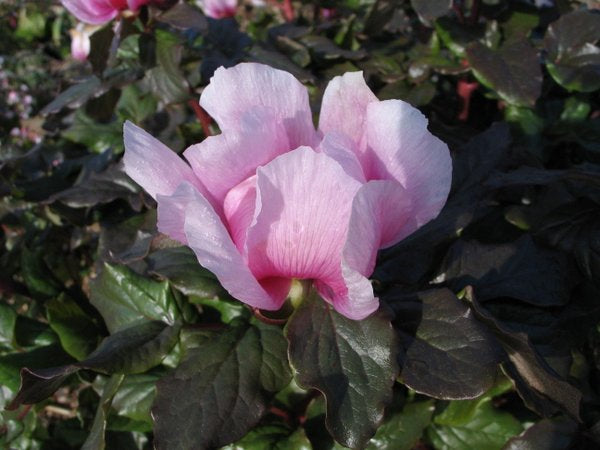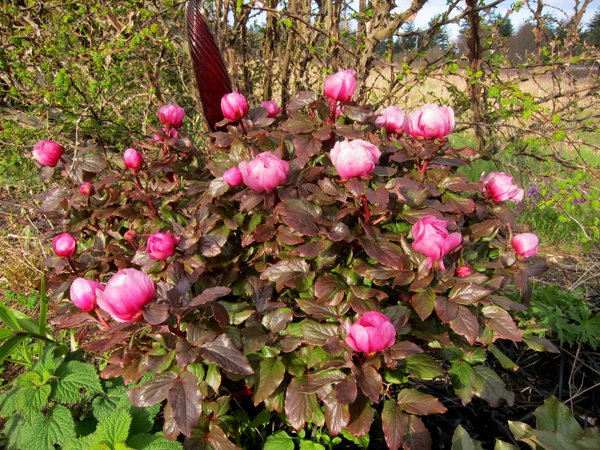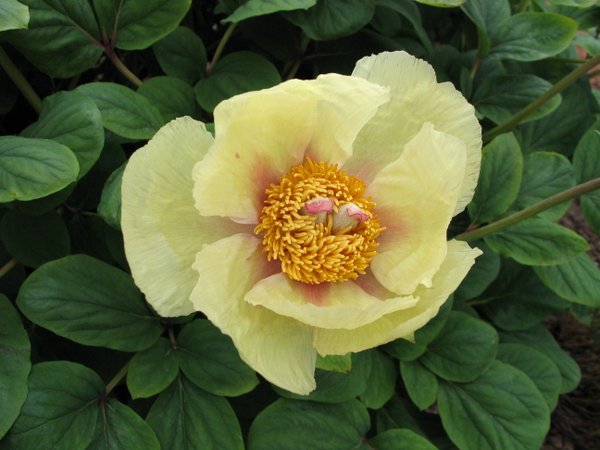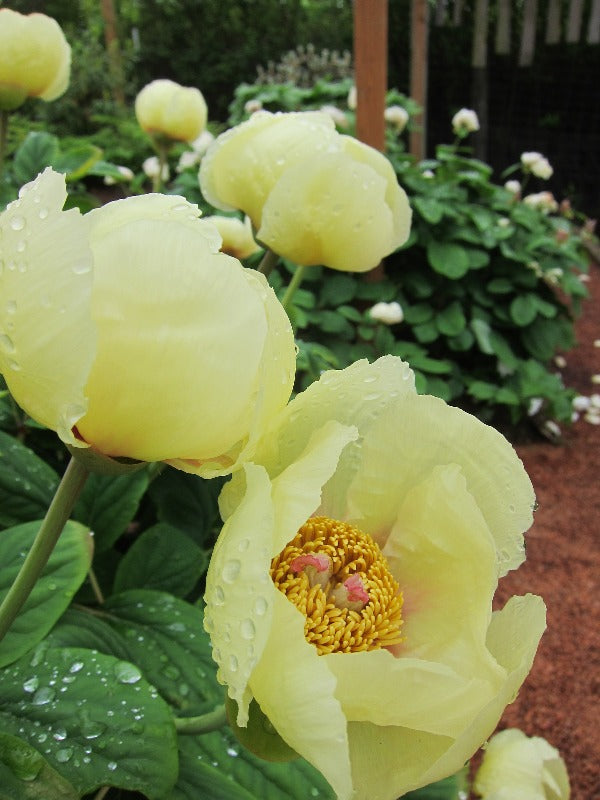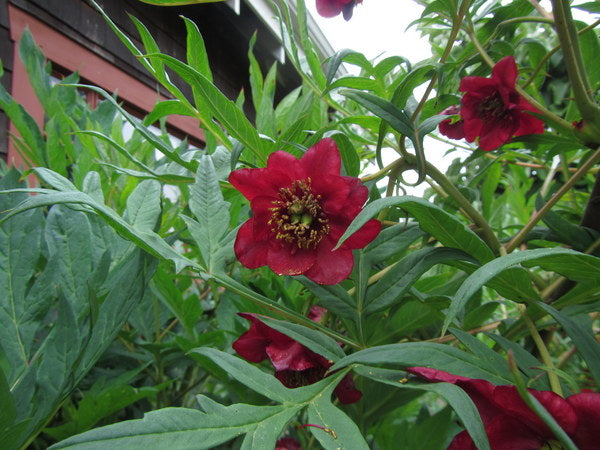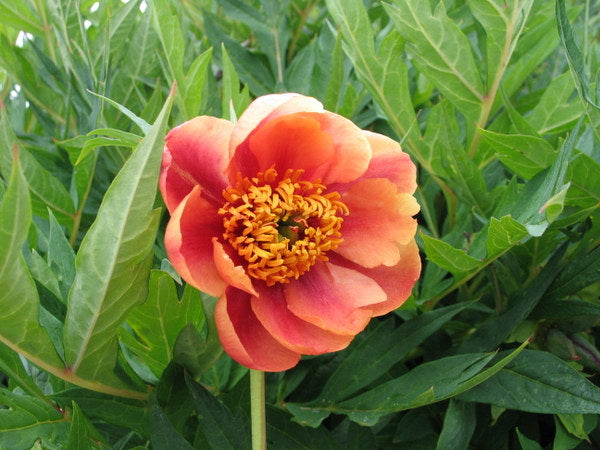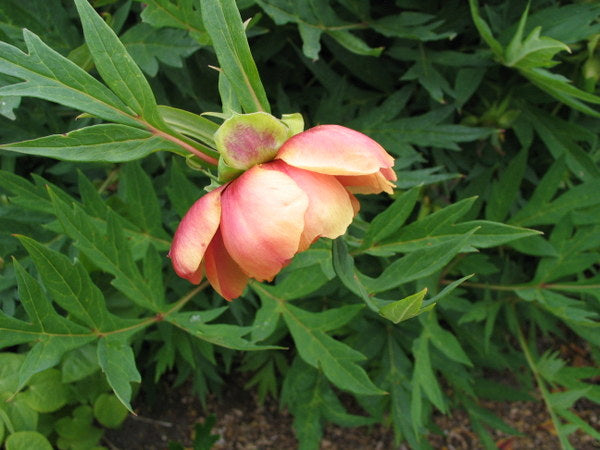Sort by:
1775 products
1775 products
The devilish trident form leaves of this Japanese cultivar brought to the US by Barry Yinger have that alluring femme fatale combination of danger and beauty. While the name translates to bamboo leaf referring to its resemblance to trifoliate bamboos the latter would certainly have far less of a presence in human culture if they were as unfriendly as this impostor. Think of the screening you could make to keep those pesky neighborhood kids from tromping on your tender goodies. Comes with all the traits you expect from Osmanthus, tough, easy, fragrant flowering. One of the coolest in a vast sea of cultivars.
Oxalis griffithii is an uncommon woodland clumper from Japan with single white flowers typically. Rarely can you find the double white form which is quite choice. Scarcer than hen's teeth is the double flowered pink form which marks you as a collector of the highest caliber. This is one of those botanical treasures where feeling smug is justified.
The enemies to lovers trope never gets old in my opinion, and we do our part to contribute by growing this twee South African delight. Banish thoughts of weedy wood-sorrel from your fraught gardening mind and simply embrace the saccharine sweet candy stripe flowers of this bulbous species. While unfortunately frost tender these are quite easy and adaptable as a houseplant, where it provides a pop of winter color in Dec-Feb. Goes dormant in Summer but the unique three-finger foliage arrives in Fall.
The word exceptional describes this ultra-collectible plant – a species peony in the truest sense. It is unlike its well-known relatives and mudblood hybrid cousins in just about every way. Fleshy blue-green leaves are flattened and dissected in a way that resembles birdwings illustrated by medieval illuminators, ornamental to the maximum. The single, diminutive, downward-facing flowers on the other hand are something only a plantaholic could love, leathery and not at all blousey but with a charismatic scarlet and yellow coloration that makes some amends. Rarely offered and rarely seen, in part because it inhabits the dry pine woodlands east of the Mountain West. Even though it is native to Washington east of the Cascade Mountains, this collection is from the southernmost part of its range in Washoe County, Nevada. Given its habitat, in wetter climates this will ask for quite good drainage in full sun to dappled shade – our happy plant likes our rainshadow rock garden. Any inherent and perceived challenges are well worth the trouble for those with supreme taste. While these are relatively small seed-grown plants which aren’t flowering size - not of the standard hybrid peony three-eye variety – this is more than enough to get your plant-nerd on!.
One of the finest of the species Peonies, this Mediterranean goody is among the first to bloom in spring. Fabulous new growth and very showy single pink flowers. If you want scent, get a hybrid. If you want class, here you go. This is a stunning and very good plant whose foliage gleams with a metallic sheen which looks great throughout the summer. The late summer/early fall seed pod display is of high ornament. Good, well drained soil, this will be more heat tolerant than the other species and the one most apt to succeed if you live in an area with minimal winter cold. When planting, just cover the red buds no more than an inch or two. The large band pots are seedlings that are a couple years from blooming size. The bare root are large and flowering size.
Choice woodland species from Japan where the small bowl-shaped white flowers are much admired and combine harmoniously with the simple rounded leaflets. An easy herbaceous species and one of the few Peonies that thrives in the shade. Looks great with Ferns, Hellebores and Hostas. This species has been submerged into Paeonia obovata by Hong De-Yuan in his extraordinary monograph 'Peonies of the World, Taxonomy and Phytogeography'. This book, along with the newly published second volume (2011) 'Peonies of the World, Polymorphism and Diversity', will remain the undisputed last answer for the foreseeable future.
That said, we will retain the epithet japonica to differentiate it from obovata as this blooms much earlier than our pink P. obovata from Japan and has an entirely different horticultural gestalt in the garden. We can hear Hong De-Yuan now "I pour my life into this unrivaled and exhaustive treatment of the genus Paeonia and this is what you take from it - horticultural gestalt? AARRRGGGHHH!" These are big blooming size bare root plants, most with multiple eyes.
